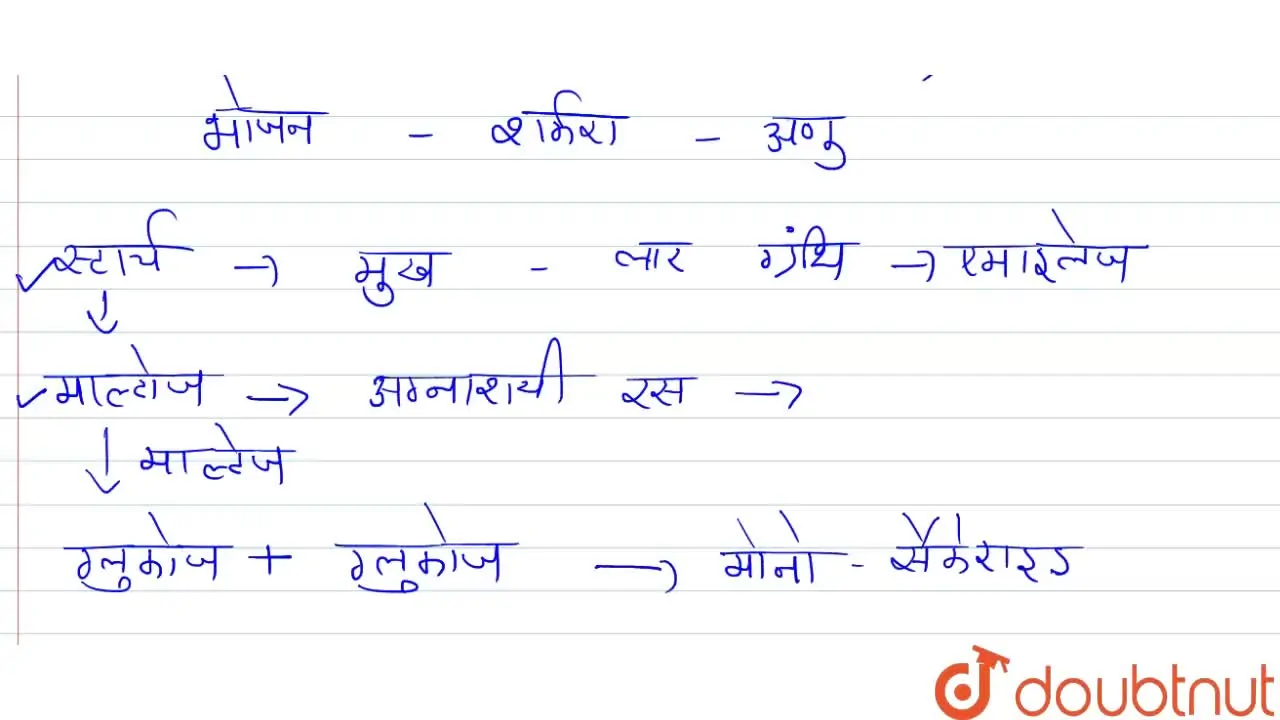How are polysaccharides and disaccharides digested?
Video Solution
Text Solution
The digestion of carbohydrates takes place in the mouth and the small intestine region of the alimentary canal. The enzymes that act on carbohydrates are collectively known as carbohydrases.
Digestion in the mouth:
As food enters the mouth, it gets mixed with saliva. Saliva – secreted by the salivary glands – contains a digestive enzyme called salivary amylase. This enzyme breaks down starch into sugar at pH 6.8.
Starch Salivary amplase−−−−−−−−−→pH 6.8 Maltose + Isomaltose + Limit dextrins
Salivary amylase continues to act in the oesophagus, but its action stops in the stomach as the contents become acidic. Hence, carbohydrate-digestion stops in the stomach.
Digestion in the small intestine:
Carbohydrate-digestion is resumed in the small intestine. Here, the food gets mixed with the pancreatic juice and the intestinal juice. Pancreatic juice contains the pancreatic amylase that hydrolyses the polysaccharides into disaccharides.
Starch (Polysaccharides)Amylase−−−−→ Disaccharides
Similarly, the intestinal juice contains a variety of enzymes (disaccharidases such as maltase, lactase, sucrase, etc.). These disaccharidases help in the digestion of disaccharides. The digestion of carbohydrates is completed in the small intestine.
Maltose Maltose−−−−→2Glucose
Lactose Lactase−−−→Glucose + Galactose
Sucrose Sucrase−−−→ Glucose + Fructose
|
Updated on:21/07/2023
Related Playlists
Similar Questions
How are polysaccharides and oligosaccharides digested?
View SolutionDisaccharides and Polysaccharides
View Solutionwhich is a disaccharide ?
View SolutionSmallest polysaccharide is
View SolutionHow to differentiate between monosaccharides and disaccharides
View SolutionAn animal polysaccharide is
View SolutionWhich one is a disaccharide ?
View SolutionClassify the following into monosaccharides and disaccharides.
View SolutionWhich one is a disaccharide ?
View SolutionLactose is a disaccharide of
View Solution


